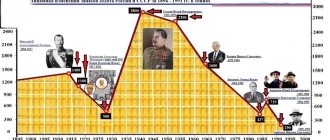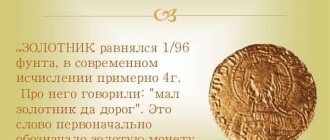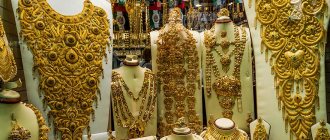Types of ingots
There are several types of ingot standards, which have different applications and technologies. According to the method of application, they are divided into the following:
- measured;
- standard.
gold bars
are intended for sale to citizens, standard ones are used only for technological needs. According to production technology, there are several types:
- stamped;
- powder;
- cast.
The designation of stamped ones is SZSh, their weight does not exceed half a kilogram, they can easily be lifted with just your fingers. When stamping, they are cut from flat sheets. Powder ingots are made using the electrolytic method, and metal powders are used for their production. They are not used in the Russian Federation. They are the cheapest and are also rarely used by banks in other countries.
Ingots that are made by casting have a large mass and will be difficult to lift with your fingers. Cast bricks weigh more than 500 grams, they are designated SLZ. The price ranges between powder and stamped. If the product does not meet the requirements of GOST, then it is sent to the manufacturer for re-melting. Most of them must comply with the requirements of the London Bullion Market Association.
Other international gold holders
Today, many other countries also contain Au, but their positions change more often, due to similar (small) amounts of valuable material. List of countries with medium and small Au volume:
- Türkiye – 526 tons;
- Taiwan – 423.6 tons;
- Kazakhstan – 400.6 tons;
- Portugal - 382.6 tons;
- Uzbekistan - 364.2 tons;
- Saudi Arabia - 323.1 tons;
- Great Britain - 310.3 tons;
- Lebanon - 286.8 tons;
- Spain – 281.6 tons;
- Austria – 280 tons.
If one of the leaders is in a lower position, it means that the country is selling part of the precious metal from its reserves in order to fulfill debt obligations and solve other problems associated with an unstable economy. An increase in the volume of Au often indicates an increase in the amount of precious metal mined and the appearance of new deposits on the map, as, for example, this happened in India.
Not only states accumulate gold, the reserves of countries with a small amount of Au sometimes correspond to the volumes that are at the disposal of corporations and world-class companies.
Table: international financial organizations
In addition to state reserves, there are also global reserves. They are owned by large financial institutions. The most famous and influential of them:
| Name of the organization | Share of gold, t |
| International Monetary Fund (IMF) | 2814 |
| European Central Bank (ECB) | 504,8 |
| Bank for International Settlements (BIS) | 102 |
Redistribution of funds from international financial organizations occurs when the composition changes. They are based on an agreement between countries and non-state institutions. When a new member of the organization is accepted, the size of the quota is also taken into account.
Gold bars
Table: global investment funds
The gold of the world is distributed not only between countries and large international organizations; a certain share of the precious metal is owned by private investment companies. If you are wondering how much large volumes of Au hold, you should study the table:
| Company name | Amount of gold, t |
| SPDR GOLD Shares | 850,5 |
| iShares Gold Trust | 234 |
| Xetra-Gold | 213 |
Investment companies (ETFs) have advantages, including: minimal spreads to London fixing, high liquidity. This explains why many famous financiers today have "gold funds."
Ingot weight
An ingot is a piece of metal, it looks like a bar and comes in several different grades and weights. Bankovsky has the highest purity of 999.9, that is, it is almost pure gold.
How much does a gold bar weigh? In most cases they weigh 1 kg. These are the types of investment objects that any bank can offer you. Standard bars are regulated by government or legislation. They weigh between 11 and 13.3 kilograms.
In some countries, the bank may offer you to buy bullion of different weights starting from 1 gram. The largest bar on earth weighs 200 kilograms; it is also made of the purest gold.
In 1943, the United States passed the Gold Reserve Act. It stated that gold in the country's reserves should be stored only in the form of bars. The standard bullion in the US Gold Reserve weighs 400 troy ounces. But for commercial purposes they also allow the use of ingots of different weights.
So, for jewelers they are made weighing one kilogram; at gold mining sites they are cast at 1200 troy ounces. A troy ounce weighs approximately 30 grams and is an international measure of the weight of gold. Gold is traded in troy ounces on precious metals exchanges.
To imagine how much a gold bar weighs, you can take a 10-liter bucket and fill it with water. Try to lift it: it’s heavy, isn’t it, but a gold bar weighs even more.
Leading countries in gold reserves
I already wrote about gold reserves in countries around the world in one of my articles. Therefore, now I will only briefly list a short list of the world leaders in gold reserves. In a separate article you can see the complete list of countries in the world by gold reserves at the end of 2019 - beginning of 2021.
the United States leads the overall ranking ; the gold reserves of the states today exceed 8.1 thousand tons . The closest pursuer, Germany, lags behind by more than two times in terms of gold reserves. In Germany, the gold reserve is 3.3 thousand tons. The top 5 countries in the world also include Italy (2.45 thousand tons), France (2.43 thousand tons) and Russia (2.2 thousand tons). In addition, the top ten also included China, Switzerland, Japan, India and the Netherlands. More detailed statistics on gold reserves here.
Measuring ingot in Russia
Products that are produced weighing up to one kilogram, have a purity of 999.9 and are used for investment by individuals are called measured. Used for sale, they are marked. Special requirements established by GOST include:
- Permissible deviations of dimensions and weight for each weight. At the same time, the thickness of the product is not standardized; standards are established only for length and width.
- If there is an appropriate agreement, some parameters may change, including dimensions and shape.
- The products should not have chips, cracks, or grease stains.
- Changes in planes over time due to crystallization or shrinkage of the metal are allowed. The surface can be concave or convex.
- The product must be marked, the inscriptions must contain letters and numbers and be legible.
- Correction or merging of characters in the marking is unacceptable.
- A distinctive symbol may be applied to one or more sides.
Gold bank bars
In accordance with the standard, they have the following markings:
- the inscription “Russia”, which is located in an oval;
- designation of mass in numbers;
- the inscription "Gold";
- sample or fraction of metal;
- The manufacturer's brand is placed on the back or front side of the product.
Thus, the measuring ingot must be marked and the weight must be indicated on it, which cannot exceed one kilogram.
World reserve estimates
To roughly determine how many tons of gold there are in the world, one can imagine that the entire volume of the metal in question, which humanity has mined over the entire period of its existence, was melted down into one figure. It will be able to take the form of a huge cube. The length of each edge will be about 20 meters.
However, the reality is that the precious resource is scattered in small pieces throughout the world. In this regard, it is impossible to say exactly how much gold has been mined and where it is located. But you can use information that is provided by specialized media. Then it will be possible to make a rating of the regions where the most gold is stored and mined.
There is an organization that carries out a thorough analysis of the global market for gold reserves. It's called Thomson Reuters GFMS . According to its representatives, the reserves of the metal in question on Earth are about 172 thousand tons.
However, there are other opinions on this matter. Some experts believe that there may be from 155 thousand to 2.5 million tons of gold on Earth. This error is due to the fact that usage was not recorded at all times, and a lot of information was contained in state or personal secrets.
According to James Turk, one of the researchers of the history of the precious metal, by 1500 AD, humanity had mined no more than 15 thousand tons of gold. He attributes this to the fact that at that time the study and mining of gold were quite complex undertakings. The technologies of that time made it possible to obtain a small volume of metal with large time and resource costs.
And Jen Skoyles, an employee of The Real Asset Company, believes that this figure could be up to 300 thousand tons. According to his research, approximately 1,500 kilograms of gold were spent to make Tutankhamun’s coffin alone. As is known, in ancient times, many robbers robbed such burials, appropriating large volumes of gold. Skoyles believes that most of the jewelry was not studied by archaeologists because it was not found.
An interesting fact is that gold, which was once mined from the depths of the earth, has not disappeared anywhere and continues to be used in circulation. Thus, when purchasing any piece of jewelry, there is a chance that gold that was mined centuries earlier was used to make it.
The current volumes of world gold reserves are also difficult to estimate. Most experts believe that official information on this matter is incorrect and the real figures are much higher. Many associate this with conspiracy theories, but the point is in the accounting procedure itself. It is believed that an impressive portion of the world's reserves are not calculated because they are kept secret. For example, no one knows exactly how much gold is mined in China or how much precious metals are “walking” on the black market in Colombia.
Despite this, all scientists are confident that the world's reserves of the precious metal will not be depleted for a long time and humanity will not experience serious problems with this.
Standard Ingot
How much is a standard gold bar? It must meet all Russian standards, and its mass is checked on a special scale. It ranges from 11 to 13.3 kg, and the ingot must comply with the rules:
- It must be made in the form of a truncated pyramid, which has established dimensions, which, in the case of a specific agreement, can be changed.
- The surface should be shiny. The presence of stains and slag is not allowed.
- There may be depressions up to 0.5 cm on the surface.
- The marking is applied to the lower base and should include: metal grade, sample, manufacturer's mark, year.
In the Russian Federation, all this is indicated on one side of the ingot. Of course, you can’t lift a brick weighing more than 10 kg with your fingers.
Interesting facts about product weight:
- Gold is not only used in trading and jewelry. It has been used for many years to make Olympic medals. The first medal made weighed only 6 grams; the mass of modern medals is larger.
- According to estimates, a total of 145,000 tons of gold were mined, but it is impossible to calculate how much remains, since new deposits are still being discovered.
- The weight of gold is quite large. A ton is a cube whose edge is only 37 centimeters long. And if you weigh a cubic meter of this metal, you get more than 19 tons.
- Tutankhamun's sarcophagus, which was made of gold, weighed 1.5 tons.
Thus, one kilogram gold bars are used for investment. Used for storing reserves in the gold and foreign exchange reserve - 400 troy ounces or no more than 13.3 kilograms. If you wish, you can go to banks and buy a gold bar of one gram of gold.
Import and export of gold by country of the world
The largest importers of gold, according to statistics from the International Trade Center for 2021, are:
- UK ($70.7 billion)
- Switzerland ($60.6 billion)
- China ($43.9 billion)
- India ($32.1 billion)
- Hong Kong ($13.9 billion)
- Türkiye ($11.2 billion)
- Singapore ($10 billion)
- USA ($9.6 billion)
- Thailand ($7 billion)
- UAE ($6.7 billion)
In total, in dollar terms, more than $306 billion worth of gold was imported in 2021. As for Russia , it is not among the top 50 countries for imports. Its gold imports in 2021 were only $15.8 million .
The largest exporters of gold in 2021, according to ICT statistics, are:
- Switzerland ($61.9 billion)
- Hong Kong ($25.1 billion)
- UK ($23.3 billion)
- UAE ($17.7 billion)
- USA ($17.1 billion)
- Australia ($16.2 billion)
- Canada ($15.3 billion)
- Singapore ($11.5 billion)
- Thailand ($7.5 billion)
- Peru ($6.7 billion)
Russia is in 13th place , gold exports in 2021 amounted to $5.7 billion , although in previous years it was significantly less.
The emergence of paper money. Formation of government gold reserves
This continued for many centuries, until paper money replaced gold and silver coins. It is clear that this did not happen immediately, but it had far-reaching consequences.
The thing is that there is never enough money
. And with the widespread development of trade, the credit and financial system and other institutions of monetary circulation, the shortage of precious metals began to affect. They were replaced by copper and other metals and alloys. But this did not solve the problem either. The issuance of more and more metallic money, compensating for the lack of means of payment, led to a significant decrease in their value.
Paper money came to the rescue
, called in Russia for the period from 1769 to 1849, “assignats” (although in fact this word means a promissory note that gives its owner the right to collect the debt from the person who borrowed the money). The first banknotes went into circulation in China, which mastered the production of paper earlier than others. Already in the 7th century AD, they were in use everywhere in the Celestial Empire.
Almost half a millennium has passed. Financially for Europe, the 12th century was marked by the appearance of the first banking houses in Italy, and only a century later Marco Polo introduced paper money to Europeans.
However, over time, the appearance of a significant number of banknotes - actually low-value pieces of paper - required that they be backed with “special coin” in the form of precious metals. Only in this case could holders of banknotes be sure of the possibility of exchanging them for gold and silver. This moment served as the starting point for the formation of the first state gold reserves
.
Under pressure from the population, which demanded a legislative framework to stabilize monetary circulation and the functioning of the banking system, the English Parliament adopted the Robert Peel Act in 1884. A document linking the printing of banknotes (in quantitative and price terms) with the availability of gold reserves in the state treasury. Which later became the generally accepted norm.
But... due to a number of reasons, countries and their governments gradually abandoned this practice
, switching to the issuance of fiat banknotes - not fully backed by the gold reserve of treasury obligations. However, this measure did not allow us to completely avoid the accumulation of gold and other valuables in state storage facilities intended to eliminate emergency situations. They manifest themselves in the event of armed conflicts, natural disasters, economic and political upheavals.
Since then, many countries around the world have some reserves of gold, which is part of their gold and foreign exchange reserves.
– funds managed by the Ministry of Finance or the central bank.











